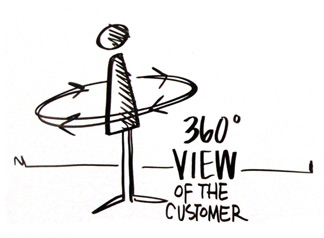Customising your Marketing Approach to Adapt to the Evolving Stakeholder Environment
Deirdre Coleman interviews Ragnar Gåseby, Global Head of Multichannel Marketing at Merck (MSD) about customising your marketing approach by acting on the communication and engagement preferences of diverse customer segments.

Engagement is about building a relationship with the customer based on a coordinated series of compelling interactions. This goes beyond managing the experience at individual touch points to include all the ways companies motivate customers to engage in an ongoing relationship with a product, brand or company.
Marketing – the Engine Driving Customer Engagement
According to Ragnar Gåseby, Global Head of Multichannel Marketing at Merck (MSD), “Marketing, once a last-stage “push” for products, has become a cross-functional force for customer-focused companies, and in pharma’s case this ranges across all customer groups from patients through physicians, HCPs, institutions and payers. Marketing used to be a siloed function with the objective of using customer insights to shape the product, position its value, and then “push” the product to market. The customer landscape is rapidly changing away from physician-only influence to a variety of additional influencers like patients, institutions and payers. This combined with the dramatic increase in customer touch points, the growth of data, and the renewed importance of the customer experience are taking marketing out of its traditional boundaries, making it fundamental to all aspects of the organization. This is a key challenge of MCM: how to fully integrate coherent customer engagement strategies across a myriad of customer segments and touch points — across a growing number of channels. Since these customer interfacing opportunities are distributed across multiple areas of the organization, seamless coordination will require a more nimble, less siloed organizational structure. Change management is a big stumbling block to be overcome in moving towards an integrated, cross-functional, multichannel approach that delivers a richer, well-orchestrated experience for the customer”.
“The marketing function needs to be the engine driving customer engagement. The concept is to lead the customers from touch point to touch point creating an ongoing continuous customer engagement. If the journey (or chain) is broken it takes a lot more effort in getting the customer back to reengaging. We also see from data that customers who are engaging on an ongoing basis have a higher likelihood of engaging deeply with respect to promotional e-mail communication”, he maintains.
Building Multi-Channel Capability
Developing a 360º view of your customers is neither simple nor inexpensive.
To meet the needs of multichannel customers, companies must create cross-channel marketing programs able to identify these segments, collect data on their activities across all existing channels and then apply analytics to this data to more easily target the right offers to the right customers via the most relevant and cost/efficient channels and optimize for each device.
“For us the main focus should always be the customer, not the channel: a true multi-channel strategy involves each channel playing a core role and offering a defined value for the customer. While they operate within a world containing multiple interaction channels, they are still ONE customer. Better insight into their behaviour and preferences is fundamental, and thanks to the digital age, we can now collect more customer segment data than ever before. The key is acting upon this data in real time to develop a 360º view of your customers and optimising every touch point. In this multi-channel landscape, developing a 360º view of your customers is neither simple nor inexpensive. However, once you have put in place the necessary processes and systems, the results will speak for themselves”, notes Gåseby.
Providing the information required by the customer is key to building a relationship and offering value.
Marketers agree that fostering brand loyalty is one of the key goals of any MCM strategy. At physician and HCP level, providing information and tools that benefit their daily practice are important steps in boosting loyalty and building trust. “Providing the information required by the customer is key to building a relationship and offering value. The development of the Univadis medical resource portal is a digital asset that allows us to engage at a very deep level with the HCP. The portal which provides independent scientific content delivers value to our customers, allowing us to drive an ongoing customer journey and build customer reach. With more than 2 million registered users, Univadis supports healthcare professionals in their daily practice through breaking medical news, accredited education courses, disease information and powerful point-of-care tools specifically tailored to their medical specialty. Ultimately, it’s about providing value and addressing patient needs”.
The success of a company’s multichannel efforts hinges on a myriad of factors. Customer centricity has become a strategic imperative, and organizations need to create a channel mix capable of delivering a valued and differentiated experience at each key customer interaction.
Ragnar Gåseby will be presenting at eyeforpharma Barcelona 2014 in March. For more information on his presentation, or to see who else is attending click here.
